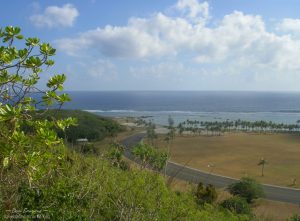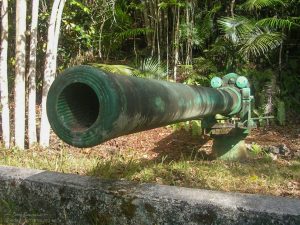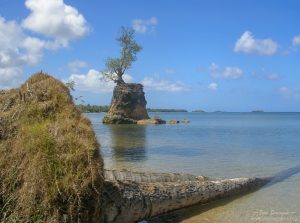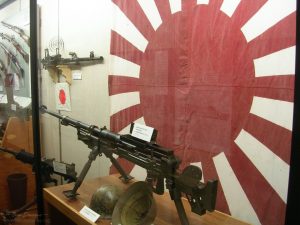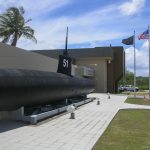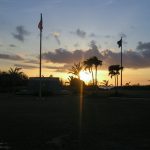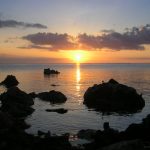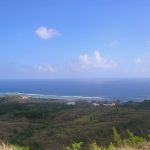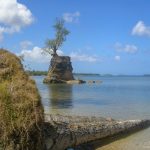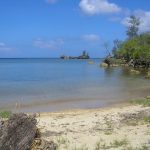 War in the Pacific National Historical Park, Guam, protects portions of important and bloody battlefields where the US Marines landed and retook Guam from the Japanese during WWII. Beyond the Guam campaign, the park was established to “commemorate the bravery and sacrifice of those participating in the campaigns of the Pacific Theater of World War II.”
War in the Pacific National Historical Park, Guam, protects portions of important and bloody battlefields where the US Marines landed and retook Guam from the Japanese during WWII. Beyond the Guam campaign, the park was established to “commemorate the bravery and sacrifice of those participating in the campaigns of the Pacific Theater of World War II.”
Visitor Rating (write your own review below)
ILNP Park Review
 Our Visit. I visited War in the Pacific NHP while on a business trip to Guam in May.
Our Visit. I visited War in the Pacific NHP while on a business trip to Guam in May.
Our Weather. Clear with a temperature in the mid 80s
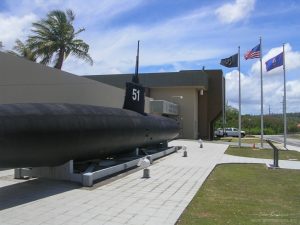
The Visitors Center hosts a 30-minute video and a few exhibits including the Japanese mini sub seen here (May)
Overall Impression. With its lush vegetation, beautiful beaches and pristine turquoise waters, its difficult to imagine the amphibious landing and bloody battles that occurred on Guam not too many decades ago. However, if you look closely, you’ll see the remains of the pillboxes, caves and trenches manned tenaciously by the Japanese that cost thousands their lives. While at first appearing like a tropical paradise, the The War in the Pacific NHP provides little glimpses into this bloody history if you’re willing to look for them.
Visiting. Visiting War in the Pacific NHP can take anywhere from 30 minutes to all day. A 2-3 hour excursion will give you enough time to go to the visitors center, watch the informative video and drive to 3-4 of the park’s units for some brief hikes. The park is composed of seven geographically separated units, but most are within a 15 minute drive of the Visitors Center. Some are closed or not very accessible, so this review will concentrate on the units which are most accessible to visitors. In my opinion, these are in priority order.
T. Stell Newman Visitors Center
The Visitors Center is located on Marine Highway (Highway 1) adjacent to the Navy base. Most visitors to Guam stay in Tumon, so this is about a 20 minute drive. The Visitors Center has a few artifacts on display (including a Japanese Type C mini sub out front), but its mainly a good first stop for getting information. If you have a little time, the 30-minute video is very informative and offers a good overview of Guam’s recent history and the battles of WWII that occurred on the island. Warning for parents: I would rate the video PG-13 because it contains cartoon depictions of the original inhabitants (Chamorros) in the nude and contains photos of beheaded bodies–not gory, but they might be disturbing for younger viewers.
Asan Beach Unit
Asan Beach is the site of the northern Marine landing, and it’s really the “heart” of the park. The beach is a popular spot for recreation and jogging, and probably offers the best snorkeling within the park (there is better snorkeling elsewhere on the island if that is your priority). The beach is dotted with several monuments, the largest of which is the monument at Asan Point marking the 50th anniversary of the landing. From the monument, you can hike a trail up the hill to see things from the perspective of the Japanese defenders. A short way up the trail, a smaller trail leads down some stairs to a restored artillery bunker on the beach. At the top of the trail is an overlook of the beach.
Asan Inland Unit
The easiest way to access the Asan Inland Unit is to take Highway 6 up to the Asan Bay Overlook. Here you will find a great vista of Asan Beach and a memorial to the Americans and Chamorros (locals) who suffered or died during the Japanese occupation and retaking of the island.
Piti Guns Unit
The three guns of the Piti Guns unit were not quite complete by the invasion, so they were never fired, but they offer a good look at actual military hardware not readily found in the other units. The hike to the guns is steep but short, but the starting point is difficult to find if you don’t know where to look (it took me three tries). From Hwy 1 south of Piti, take Hwy 6. Once on Hwy 6, take the first left (about 100 yards from Hwy 1). Drive about 1/2 mile through the residential area of Piti until you get to the church. Park on the east side (far side) of the church and look for the concrete stairs leading into the jungle–this is the trail to the guns. Apply a liberal coating of bug repellent before hiking!
Agat Beach Unit
Agat Beach was one of two Marine landing beaches. Most of the Agat unit is underwater, but there are a few sections of beach worth visiting. The most interesting is Apaca Point where a Japanese pillbox set into the rock is still clearly visible. A quick stop at Ga’an Point will allow you to see a preserved gun and a small memorial.
The Fonte Plateau Unit is closed, The Mt. Alifan Unit is “primitive” and must be hiked into, and the Mt. Chechao Unit can be hiked into after finding the dirt road that leads to it.
While the Pacific War Museum is not officially part of the National Park Unit, it is adjacent to Asan Beach and complements the park nicely. While only a few pieces of equipment remain in the park, the Pacific War Museum is full of both American and Japanese equipment, uniforms and vehicles. Admission is only a few dollars, and the museum takes about 30-60 minutes to explore.
Nearby Towns Hagatna, Tumon Bay, Guam
Other Nearby Attractions Pacific War Museum, Fish-Eye Marine Park, Chamorran Villiage
Official NPS Website War in the Pacific NHP
- The Visitors Center hosts a 30-minute video and a few exhibits including the Japanese mini sub seen here (May)
- View of Asan Beach from the top of the trail behind the memorial on Asan Point (May)
- Asan Point is home to a large memorial marking the 50th Anniversary of the Marine landing, seen here at sunset in May
- Asan Point is a great place to watch the sunset (May)
- View from the Asan Bay Overlook (May)
- The third (and best preserved) Piti Gun aims toward Asan (May)
- Fallen tree and tiny island at Apaca Point of Agat Beach (May)
- View from the beach at Apaca Point in the Agat Beach Unit. Can you spot the Japanese pillbox? (May)
Write Your Own Review

